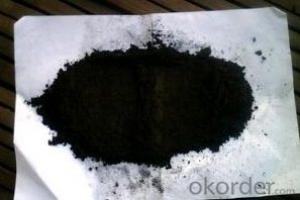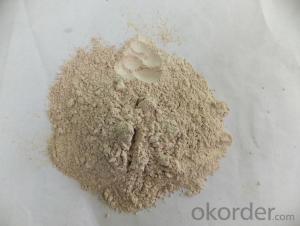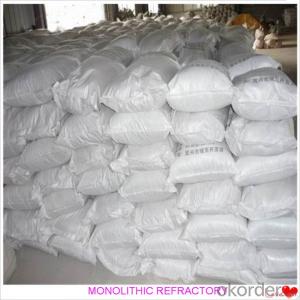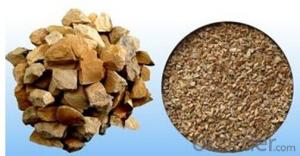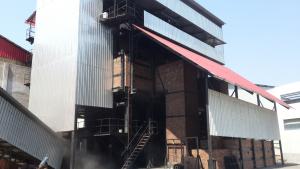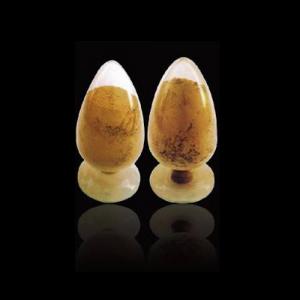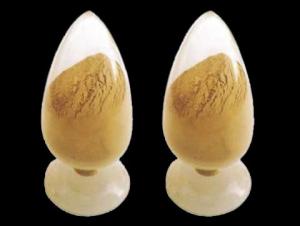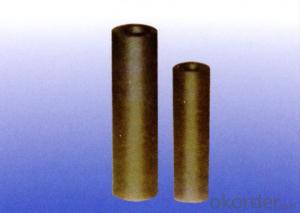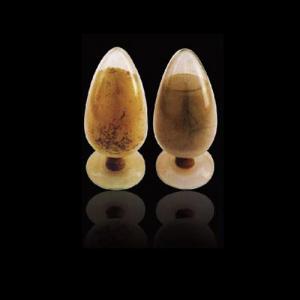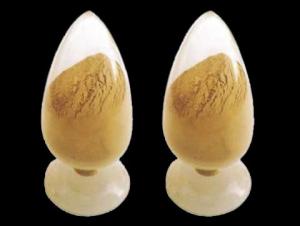Monolithic Refractories for Iron and Steel Industry - Raw Carbon Material Made by Insulation Material
- Loading Port:
- Shekou
- Payment Terms:
- TT OR LC
- Min Order Qty:
- 20 m.t
- Supply Capability:
- 1000 m.t/month
OKorder Service Pledge
OKorder Financial Service
You Might Also Like
Factory Background
The factory is majorly running and operating carbon additive (pitch coke, calcined petroleum coke and anthracite), low nitrogen carbon additive, and brake pad making material. Company is the long term supplier of Sinosteel Corporation, Shanghai Carbon Corporation, the plant of SGL Group the Carbon Company in China and some largest special carbon products producing plants.
YUAI also supplies huge amout of high quality carbon additive and graphite carbon additive to steel plants, foundries and ferrotungsten plants. YUAI has been assigned by BAO STEEL as the only organization for processing pitch coke for export purpose. The group’s major products are constantly exported to Japan, Korea, Malaysia, South East Asia countries, Europe and America, which receive praises by our consumers.
The group has invested numbers of calcinators in Anhui China to ensure the capability of producing and processing huge amount of carbon additive. Further investment is on process. According to the orders from customers, YUAI is able to processing and providing different specifications of carbon additive and other products. To provide best quality of products and to offer customers most satisfied service is YUAI’s operating objectives.
Calcined Petroleum Coke
FC:98.5%min,
S:0.5%max
A:0.8%max
V:0.7%max
Mositure:0.5%max
Size:1-5mm
This product is mainly used in steel-making and foundry. Calcined Petroleum Coke
Calcined Petroleum Coke comes from delayed coke which extracted from oil refinery. Although Calcined Petroleum Coke contains a little bit higher level of sulfur and nitrogen than pitch coke, the price advantage still makes it widely used during steel-making and founding as a kind of carbon additive/carburant.
Technology:
Laborary Equpment
In our lab,we has a high precision balance,mullfe furnace,sample making machine, dring box,sulfur measurement instrument and other calibratiing equipments.As a result,before deliverung to our customers,our products have to pass a strict test to ensure the quality and components.The testing reports will be sent to our customers to confirm untill they satisfy with it.
Packaging & Delivery
Packaging Detail:25kg paper bag into 1t weaving bag 5kg, 10kg and 20kg weaving bag into 1t weaving bag 25kg weaving bag put on pallet covered with entanglement wrap product direct into packing bag 25kg paper bag put on pallet covered with entanglement Wrap 25kg weaving bag into 1t weaving bag.
Delivery Details: 7 days
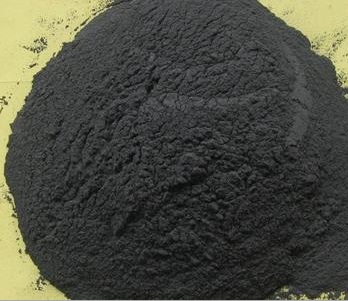
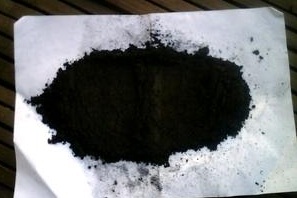
- Q: How do monolithic refractories prevent heat loss through convection?
- Monolithic refractories prevent heat loss through convection by their unique composition and structure. Unlike traditional refractory bricks, which are often porous and have gaps between them, monolithic refractories are made of a single, seamless structure. This eliminates any potential pathways for hot gases or air to circulate and carry away the heat through convection. Additionally, monolithic refractories are often dense and have a high thermal conductivity, which means they are excellent conductors of heat. This property allows them to quickly absorb and distribute the heat, minimizing the temperature difference between the hot surface and the surrounding environment. By reducing the temperature gradient, monolithic refractories minimize the driving force for convection, thereby reducing heat loss through this mechanism. Furthermore, monolithic refractories can be applied as a continuous lining, conforming to the shape of the equipment or furnace being protected. This seamless application eliminates joints or gaps where hot gases or air could escape and carry away heat. This uniform, uninterrupted lining further reduces the potential for convection heat loss. Overall, monolithic refractories are designed to create a barrier that prevents the movement of hot gases or air, thereby minimizing heat loss through convection. Their dense composition, high thermal conductivity, and seamless application all contribute to their effectiveness in preventing heat loss through this mechanism.
- Q: What are the key characteristics of monolithic refractories for electric arc furnace applications?
- Monolithic refractories designed for electric arc furnace applications possess several crucial qualities that render them suitable for the challenging conditions and extreme temperatures encountered in these environments. To begin with, monolithic refractories exhibit exceptional resistance to thermal shock. Electric arc furnaces operate at exceedingly high temperatures, and the rapid fluctuations in temperature during the melting and refining processes can subject the refractories to significant thermal stress. Monolithic refractories, however, are engineered to endure these thermal shocks without developing cracks or spalling, thereby guaranteeing the durability and performance of the lining. Moreover, monolithic refractories boast a high resistance to chemical attack. Electric arc furnaces involve the melting and refining of diverse metals and alloys, which can generate highly corrosive atmospheres. Monolithic refractories incorporate chemically inert materials and additives that bestow resistance against the corrosive impact of molten metals and slag, safeguarding the lining against chemical deterioration. Another noteworthy characteristic of monolithic refractories for electric arc furnace applications is their exceptional refractoriness. Refractoriness denotes a material's ability to retain its strength and integrity at elevated temperatures. Electric arc furnaces typically operate at temperatures surpassing 1500°C, and monolithic refractories are specifically engineered to endure these extreme conditions without experiencing substantial loss of properties or degradation. Furthermore, monolithic refractories offer efficient thermal conductivity. This property facilitates efficient heat transfer throughout the lining, ensuring uniform heating and melting of the charge material. It also helps minimize the occurrence of hot spots and thermal gradients, which can result in uneven wear and premature failure of the lining. Lastly, monolithic refractories are renowned for their ease of installation and repair. Unlike traditional brick or block refractories, monolithic materials can be cast, sprayed, or rammed into place, eliminating the need for intricate masonry work. This not only saves time and labor but also enables convenient maintenance and repair of the lining, reducing downtime and enhancing overall furnace efficiency. In conclusion, monolithic refractories for electric arc furnace applications possess exceptional thermal shock resistance, high chemical resistance, high refractoriness, efficient thermal conductivity, and ease of installation and repair. These qualities render monolithic refractories ideal for withstanding the harsh conditions and demanding requirements of electric arc furnace operations.
- Q: How do monolithic refractories respond to changes in thermal conditions?
- Monolithic refractories have the ability to withstand and adapt to changes in thermal conditions. They have a high thermal shock resistance, meaning they can handle rapid changes in temperature without cracking or breaking. Additionally, they exhibit good thermal conductivity, allowing them to efficiently conduct and distribute heat. Overall, monolithic refractories demonstrate a stable and reliable response to changes in thermal conditions.
- Q: What are the considerations for repairing and relining monolithic refractories?
- When repairing and relining monolithic refractories, there are several important factors to take into account. Firstly, it is crucial to evaluate the level of damage or wear on the refractory lining. This can be achieved through visual inspection or non-destructive testing methods like ultrasonic or thermal imaging. By determining the severity and location of the damage, the appropriate repair or relining technique can be selected. Another aspect to consider is the type of monolithic refractory material being used. Different materials have varying properties and performance characteristics, which must be considered when choosing a repair method. For instance, certain materials may require specialized equipment or high-temperature curing during installation. The operational conditions of the refractory lining also play a significant role. Factors such as temperature, chemical exposure, and mechanical stress can impact the performance and durability of the lining. Therefore, it is essential to select a repair or relining method that can withstand these conditions and provide long-lasting protection. Furthermore, the downtime and cost implications of the repair or relining process need to be taken into account. Some methods may involve longer curing or drying times, resulting in extended shutdown periods. It is important to carefully evaluate the benefits of the repair or relining against the potential production losses and expenses associated with the downtime. Lastly, adhering to industry standards and guidelines is of utmost importance when repairing or relining monolithic refractories. This ensures that the repairs are executed correctly and safely, minimizing the risk of future damage or failure. Seeking advice from refractory experts or manufacturers can provide valuable insights and guidance in this regard. To summarize, the considerations for repairing and relining monolithic refractories encompass assessing the extent of damage, understanding the properties of the refractory material, considering the operating conditions, evaluating downtime and cost implications, and following industry standards and guidelines.
- Q: What are the specific requirements of monolithic refractories for steel ladle purging applications?
- Monolithic refractories used for steel ladle purging applications need to possess specific characteristics. These include high resistance to thermal shock and spalling, excellent erosion and corrosion resistance, low porosity, and high strength at high temperatures. Additionally, they should have good thermal conductivity and be capable of withstanding aggressive steel compositions and temperatures. Overall, the specific requirements for monolithic refractories in steel ladle purging applications are aimed at ensuring durability, longevity, and optimal performance in the harsh conditions of the steelmaking process.
- Q: Can monolithic refractories be used for the lining of blast furnace runners and troughs?
- Yes, monolithic refractories can be used for the lining of blast furnace runners and troughs. Monolithic refractories are versatile and can be formed into any shape or size, making them suitable for lining complex structures such as blast furnace runners and troughs. Additionally, monolithic refractories offer excellent thermal shock resistance and high mechanical strength, which are essential properties for withstanding the extreme conditions inside a blast furnace.
- Q: What are the recommended installation techniques for monolithic refractories?
- The recommended installation techniques for monolithic refractories typically involve proper surface preparation, mixing of refractory materials, and precise application. It is crucial to clean and remove any loose debris from the substrate before installation. The refractory materials should be mixed thoroughly with the appropriate water content to achieve the desired consistency. It is recommended to use vibration or tamping techniques during application to remove air pockets and ensure proper compaction. Careful curing and drying processes should be followed to prevent thermal shock and achieve optimal performance.
- Q: What are the challenges in repairing and maintaining monolithic refractories?
- Repairing and maintaining monolithic refractories poses several challenges. One primary challenge lies in the intricate composition of the materials used in these refractories. They typically consist of various components, including aggregates, binders, and additives. The selection and proportioning of these components significantly affect the refractory's performance and durability, making it difficult to determine the most appropriate repair or maintenance method. Another obstacle arises from the extremely high temperatures at which monolithic refractories operate. These materials are specifically designed to withstand extreme heat, ranging from several hundred to several thousand degrees Celsius. Repairing or maintaining them under such conditions necessitates specialized equipment and techniques to ensure worker safety and repair integrity. Moreover, monolithic refractories often face harsh environments, such as corrosive gases, chemical reactions, and mechanical stresses. These factors can lead to gradual degradation and damage, requiring regular inspections and maintenance. However, identifying and addressing these issues promptly can be challenging as the damage may not always be visible or easily accessible. Furthermore, monolithic refractories are commonly employed in complex industrial processes like steelmaking, cement manufacturing, and petrochemical production. These processes typically involve continuous operation, limiting the available time for repairs and maintenance. Finding suitable windows of opportunity for maintenance and coordinating process shutdowns can pose logistical challenges. Lastly, the cost of repairing and maintaining monolithic refractories can be substantial. The materials used in these refractories tend to be expensive, and the labor and equipment required for repairs and maintenance can accumulate costs. Striking a balance between repair expenses, productivity maintenance, and extending the refractories' service life can challenge plant operators and maintenance teams. In conclusion, the challenges associated with repairing and maintaining monolithic refractories arise from the complex materials used, the high temperatures involved, the harsh operating environments, the complexity of industrial processes, and the cost considerations. Overcoming these challenges necessitates expertise, meticulous planning, and effective coordination to ensure the longevity and optimal performance of monolithic refractories.
- Q: What are the recommended curing times for monolithic refractories?
- The curing times for monolithic refractories can differ depending on the type of refractory and its specific application. Following the manufacturer's guidelines for curing times is crucial to ensure proper setting and development of the refractory material. For traditional castable refractories, the typical curing time ranges from 24 to 48 hours. During this period, it is important to control temperature and humidity conditions to allow for hydration and hardening of the castable. This curing time is essential to achieve the desired strength and durability of the refractory lining. In contrast, low cement or ultra-low cement castables may need a longer curing time due to their reduced water content. These refractories often require a curing period of 48 to 72 hours to allow for adequate bonding and solidification. For gunning mixes or shotcrete applications, the curing time may be shorter, usually around 8 to 12 hours. This faster curing process is facilitated by adding accelerators to the mix, which promote rapid setting and hardening. It is important to remember that these recommended curing times are general guidelines, and specific recommendations may vary depending on factors such as ambient temperature, humidity, and the specific refractory material used. Therefore, it is advisable to consult the manufacturer's instructions or seek guidance from a refractory specialist to ensure optimal curing and performance of the monolithic refractory.
- Q: What are the common challenges faced by monolithic refractories in the iron and steel industry?
- Monolithic refractories play a crucial role in the iron and steel industry, where they are extensively used in various applications such as lining furnaces, ladles, and tundishes. However, these materials also face several common challenges in this industry. One of the major challenges is thermal shock. Monolithic refractories are exposed to extreme temperature variations, particularly during the start-up and shut-down phases of the production process. The rapid heating and cooling cycles can cause thermal stress, leading to cracking and spalling. To combat this challenge, refractory manufacturers develop high-quality monolithic materials with enhanced thermal shock resistance. Another significant challenge is corrosion. The iron and steel industry involves the use of various aggressive materials such as molten metal, slag, and gases, which can chemically attack the refractory lining. This corrosion can lead to material degradation, erosion, and reduced service life. To address this issue, specialized monolithic refractories with excellent corrosion resistance are employed, often containing additives that can withstand the corrosive environment. Abrasion is also a common challenge faced by monolithic refractories in the iron and steel industry. The movement of raw materials, molten metal, and slag can cause mechanical wear on the refractory lining, resulting in loss of material and compromised performance. Refractory manufacturers develop abrasion-resistant monolithic materials that can withstand the intense wear and tear, ensuring prolonged service life. Furthermore, the iron and steel industry often requires refractories with good thermal conductivity. This is crucial to efficiently transfer heat and maintain optimal operating conditions. Achieving the right balance between thermal conductivity and mechanical strength can be challenging, as refractories with high thermal conductivity often exhibit lower mechanical strength. Therefore, selecting the appropriate monolithic refractory with the desired thermal conductivity properties is crucial for achieving optimal performance. Lastly, monolithic refractories also face challenges related to installation and maintenance. Due to their liquid or semi-liquid nature, the application of monolithic refractories requires skilled personnel and careful installation techniques. Moreover, periodic maintenance and repair are essential to ensure the longevity and performance of the refractory lining. Regular inspections, repairs, and proper curing techniques are necessary to mitigate these challenges and optimize the refractory's performance. In conclusion, monolithic refractories in the iron and steel industry face challenges such as thermal shock, corrosion, abrasion, thermal conductivity, and installation/maintenance. Addressing these challenges through the development of specialized refractory materials and employing proper installation and maintenance techniques is crucial for ensuring efficient and reliable performance in this demanding industry.
Send your message to us
Monolithic Refractories for Iron and Steel Industry - Raw Carbon Material Made by Insulation Material
- Loading Port:
- Shekou
- Payment Terms:
- TT OR LC
- Min Order Qty:
- 20 m.t
- Supply Capability:
- 1000 m.t/month
OKorder Service Pledge
OKorder Financial Service
Similar products
Hot products
Hot Searches
Related keywords

